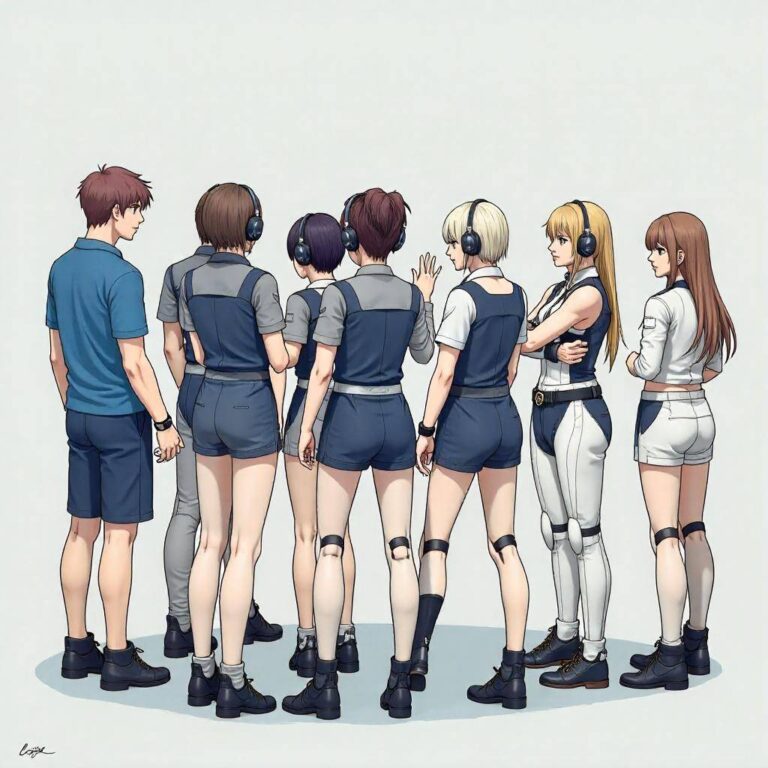Reader’s Question:
Do variable mobile suits in Gundam really make sense? Wouldn’t it be better to just have mobile suits and fighter jets from the start?
Do Variable Mobile Suits Make Sense? A Dive into the World of Gundam
As a self-proclaimed Gundam enthusiast, I’ve thought long and hard about the mechanics
of these iconic mechs. Recently, I stumbled upon a question that really got me thinking: “Do variable mobile suits in Gundam really make sense? Wouldn’t it be better to just have mobile suits and fighter jets from the start?” It’s a fair question, and honestly, I’ve wrestled with it myself.
The Purpose Behind the Transformation
First off, let’s chat about what variable mobile suits (or MS) bring to the table. The whole concept of transforming from a mobile suit to, say, a jet or whatever else, has a purpose. For one, it allows a single machine to cover a wide battlefield efficiently. Take the Zeta Gundam as a classic example. When it transforms into flight mode, it can zip through the atmosphere, leapfrogging around the battlefield while maximizing its fuel use. This clever design is all about mobility—having one unit that can do it all rather than juggling multiple machines. Imagine being on a battlefield where things change in a blink. You want to be able to adapt quickly, right? Instead of having to switch from a mobile suit on the ground to a fighter jet in the air, why not just morph the mobile suit to fit the situation? It’s like having a Swiss Army knife instead of a tool belt full of specific gadgets. And in a universe like Gundam, where versatility is the name of the game, it makes perfect sense to have machines that can transform and adapt.
Real-World Mechanics and Why It Works
Now, on to the nitty-gritty. In practical terms, variable mobile suits can achieve things that traditional mobile suits just can’t. They’re often designed for high-speed flight, allowing them to travel faster and further without relying on support systems like the Base Jabber, which traditionally transported mobile suits. It’s a game-changer, especially in combat scenarios where every second counts. For instance, take a moment to think about the Flauros from “Iron-Blooded Orphans.” This variable mobile suit transforms to utilize special weaponry, allowing it to withstand heavy fire. It’s not just about flying; it’s about being battle-ready in different environments. The ability to transform means that these machines are more than just high-tech robots; they’re strategic assets.
The Influence of Popular Culture
Let’s not forget the commercial side of things. The success of franchises like “Macross” has undoubtedly influenced the design decisions in “Gundam.” Variable mobile suits not only appeal to the audience but also open up a whole new world for merchandise. I mean, who doesn’t want a toy that can transform? The concept is just cool. The ability to own a model that flips between forms brings out the inner child in all of us. While some might argue that these transformations aren’t necessary, I’d say that they’re an essential part of what makes the series so engaging. The aesthetic appeal and the sheer fun of watching these mechs morph mid-battle is something that can’t be understated. It’s like watching a superhero reveal their true powers, and honestly, who doesn’t love that?
Striking a Balance: MS vs. Fighter Jets
Now, let’s consider the notion of just going with mobile suits and fighter jets. Sure, it sounds practical on paper. But if we dive deeper, it becomes clear that mobile suits have their own unique advantages over traditional aircraft in the Gundam universe. They can engage in close combat, navigate difficult terrains, and utilize ground cover effectively. Trying to blend the two into one cohesive unit through transforming technology is not just a creative decision; it’s a logical one as well. If we think about it, the battlefield isn’t just a sky-high arena. It’s chaotic—think urban landscapes, mountainous regions, and everything in between. A mobile suit can adapt to each of these environments more effectively than a traditional fighter jet. Plus, when you throw in that ability to transform, you get the best of both worlds.
In Conclusion: Love for the Variable
At the end of the day, the beauty of variable mobile suits is that they embody the spirit of adaptability and innovation that Gundam is known for. They aren’t just machines; they reflect the creativity and depth of the storytelling in the series. As someone who loves both comedy and action, I appreciate how these suits add layers to the narrative. Just like a good joke, the best stories often have unexpected twists, and variable mobile suits are no exception. So, to answer the original question: do variable mobile suits make sense? Absolutely! They’re not just a gimmick; they’re a testament to the ingenuity of the series and a reflection of the complex, ever-changing world of warfare. Plus, they’re just plain awesome to watch! Whether it’s the excitement of a transformation sequence or the strategic advantages they offer, there’s a lot to love about them. And hey, if you’re ever in the mood for a binge-watch session, grab some popcorn and dive into the world of Gundam. You might just find yourself appreciating those variable mobile suits a whole lot more.



